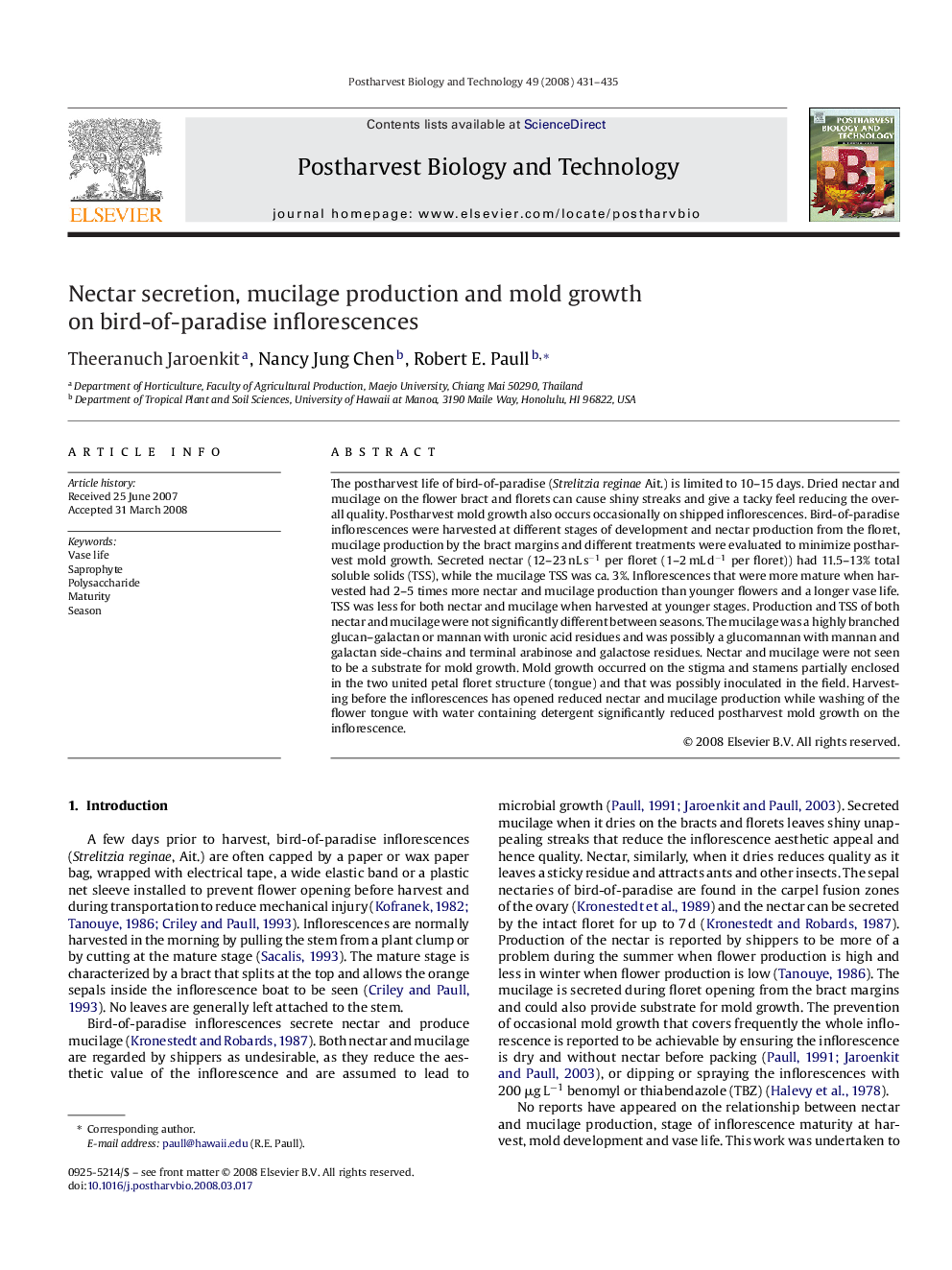| Article ID | Journal | Published Year | Pages | File Type |
|---|---|---|---|---|
| 4519423 | Postharvest Biology and Technology | 2008 | 5 Pages |
The postharvest life of bird-of-paradise (Strelitzia reginae Ait.) is limited to 10–15 days. Dried nectar and mucilage on the flower bract and florets can cause shiny streaks and give a tacky feel reducing the overall quality. Postharvest mold growth also occurs occasionally on shipped inflorescences. Bird-of-paradise inflorescences were harvested at different stages of development and nectar production from the floret, mucilage production by the bract margins and different treatments were evaluated to minimize postharvest mold growth. Secreted nectar (12–23 nL s−1 per floret (1–2 mL d−1 per floret)) had 11.5–13% total soluble solids (TSS), while the mucilage TSS was ca. 3%. Inflorescences that were more mature when harvested had 2–5 times more nectar and mucilage production than younger flowers and a longer vase life. TSS was less for both nectar and mucilage when harvested at younger stages. Production and TSS of both nectar and mucilage were not significantly different between seasons. The mucilage was a highly branched glucan–galactan or mannan with uronic acid residues and was possibly a glucomannan with mannan and galactan side-chains and terminal arabinose and galactose residues. Nectar and mucilage were not seen to be a substrate for mold growth. Mold growth occurred on the stigma and stamens partially enclosed in the two united petal floret structure (tongue) and that was possibly inoculated in the field. Harvesting before the inflorescences has opened reduced nectar and mucilage production while washing of the flower tongue with water containing detergent significantly reduced postharvest mold growth on the inflorescence.
